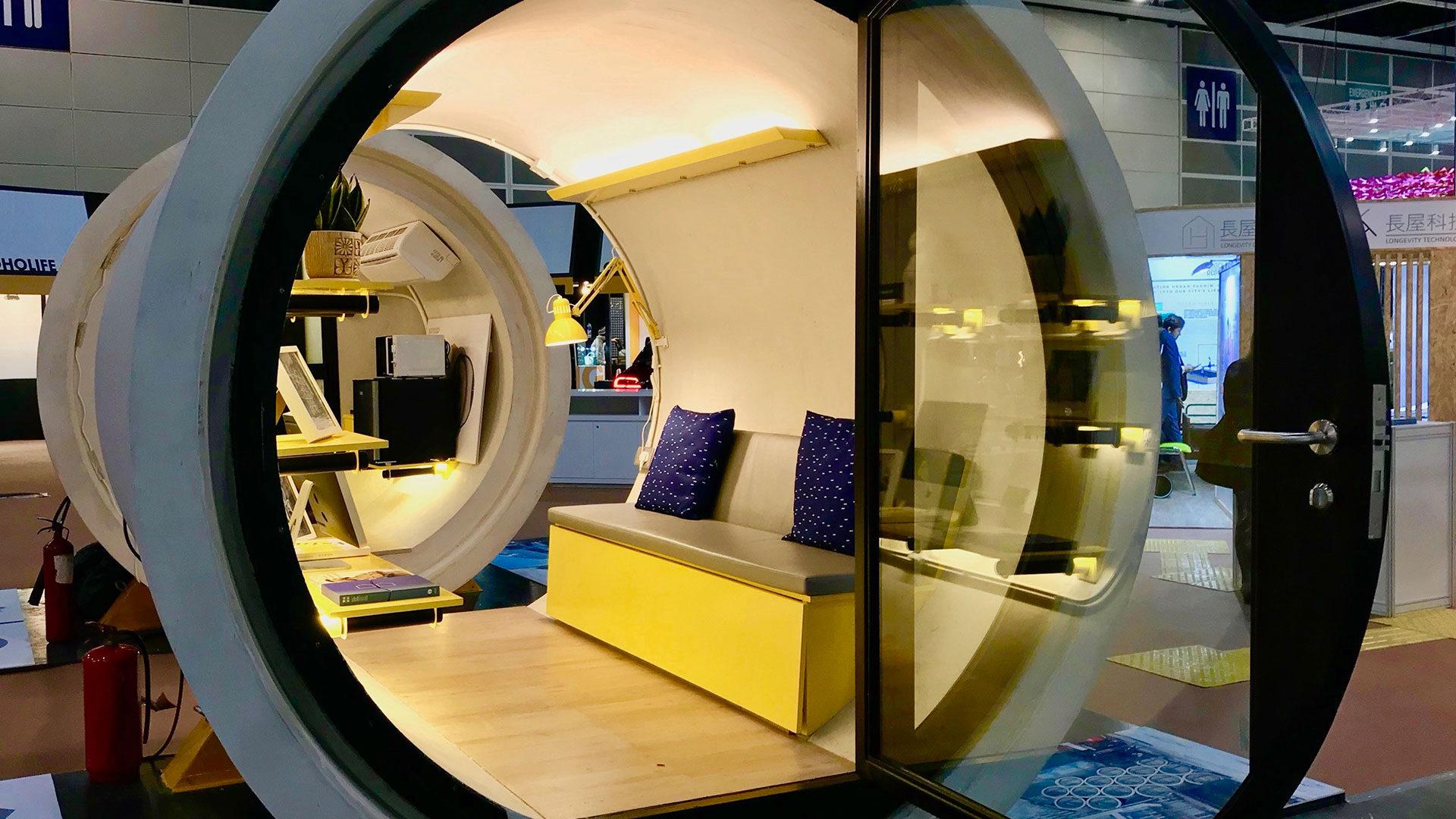In Hong Kong, an estimated 200,000 people live in compartments averaging 3.7 m2, in subdivided flats. These are the dimensions of the housing crisis in a city with one of the highest rates of skyscrapers and the highest rents in the world. In this context, the Hong Kong architecture firm James Law Cybertecture is putting into practice what is its declared aim: “to change the world with cutting-edge design (…) in the field of architecture”. They have recently presented a prototype of stackable micro-houses, which could represent a short-term solution to the city’s serious housing crisis: the OPod Tube concept.
Cybertecture’s project proposes to line the interior of a low-cost, readily available concrete water pipe with the basics to make it habitable for 1 or 2 people: a fully equipped kitchen and bathroom, including shower, mini fridge, microwave and clothesline, a bench that folds out to become a bed, and shelves, all cleverly designed to save space and look cosy. A glass front closure that lets in plenty of natural light and a smartphone-operated door complete the capsule. It can be built in two versions, depending on whether the pipe is 2.5 m or 3.1 m in diameter, 9.6 m2 and 15.32 m2 respectively.
The relative lightness of each capsule, weighing around 20 tonnes, and its strong concrete structure, makes it easy to transport and install. Furthermore, according to Cybertecture, up to four Opod heights can be stacked, without the need for additional supports, or communities can be created quickly with the addition of structural elements, as well as walkways and stairs. At the same time, their reduced dimensions allow them to be installed in tight spaces and narrow gaps in the city.
According to the architectural firm that created them, the capsules can be rented for €355 per month, and their total unit cost is €13,000. With its design, which is currently in prototype development, Cybertecture aims to make property and space, in a property market with a shortage of supply and exorbitant prices, an affordable option for many citizens. The firm’s architects are in talks with the local government to explore the possibility of implementing this flexible and feasible solution to ease the pressure on the rental market in Hong Kong.
Sources: The Culture Trip, James Law Cybertecture.
Images: James Law Cybertecture.








